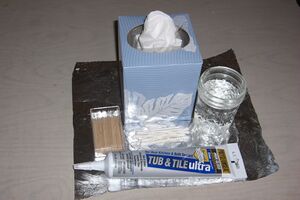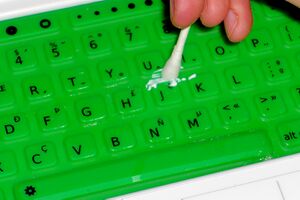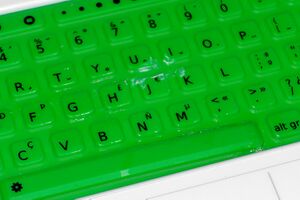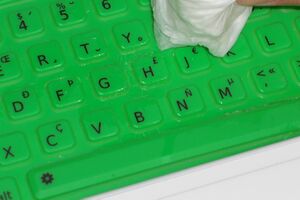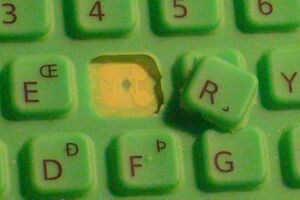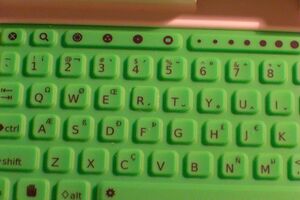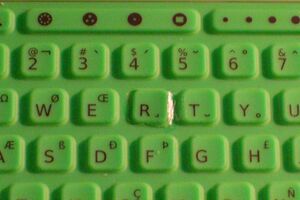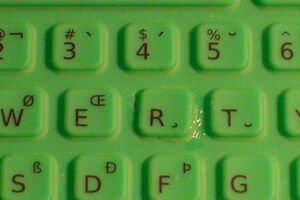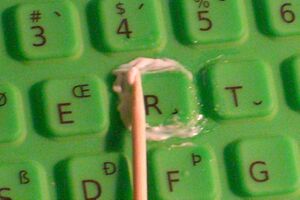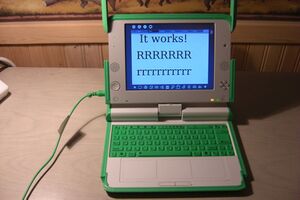Keyboard field repairs
*See note about cracked screens at the bottom
While OLPC recommends replacing ripped keyboards, that may not always be possible or, may be too costly if several laptops are involved. This simple fix uses a relatively non-toxic silicone sealer that has no harmful fumes. The repair could be, and has been, done safely by children.
Materials
- Clear Silicone tub and tile sealant (goes on white, dries clear). A 6 oz tube costs less than $3 at most hardware stores and is enough to do dozens of laptops.
- Toothpicks for applying the sealer
- Cotton swabs, tissues and water for cleanup
- Something to protect your table top if doing the repair with the keyboard removed from the laptop (aluminum foil is shown here).
If only a few keys are involved, you may wish to do the repair with the keyboard in place. Follow the second set of directions below to do the repair without removing the keyboard.
If the damage is more extensive, you will probably want to remove the keyboard following these disassembly instructions.
Repair With Keyboard Removal
After removing the keyboard, gently lift off the green silicone keypad, being careful to not tear additional keys. Lay it on your table protector.
Using one toothpick to hold the key in place, gently apply a small amount of silicone to the torn sides of the key with a second toothpick.
Use a damp (not soaking wet) cotton swab to remove the excess silicone sealer.
More cleanup may be needed.
Use a damp tissue for a final touchup. In this photo, the F, G, and H keys and the right half of the space bar were repaired previously and have already dried.
Allow the silicone to dry overnight before re-assembling the laptop according to the directions on the wiki.
Repair Without Keyboard Removal
While this may seem easier than removing the keyboard, you must work very carefully to not allow silicone to get under the green silicone keypad.
A key that had been completely torn off was re-fitted in this repair.
Carefully fit the key back into its place in the keyboard.
Apply silicone to one edge of the key and carefully clean it. If you try to do the entire key at once, it will be difficult to keep it in place while working.
Allow the first side to dry overnight.
Holding the key in place with one toothpick, carefully apply silicone to the remaining three sides, being careful not to get it under the key.
Clean up with a toothpick. To avoid having sealer run under the key, it is probably best not to use the wet cotton swab or wet tissue here.
Let they keyboard dry overnight. Note the repair isn't as clean as the one with the keyboard removed. That is because we did not use the water in the cleanup.
Test the results. This one worked.
If the key does not work, you may wish to remove the keyboard according to the dis-assembly instructions, clean off any excess sealer, and follow the instructions above.
*Cracked Screen Repairs
This method has also been successfully used with a cracked screen. The screen had an approximately 4" diagonal crack across one corner, but still operated normally. The crack was cleaned with alcohol, then covered with a bead of the same Silicone sealer used to repair the ripped keyboard. It was cleaned with a toothpick to be just a small "bead" over the crack. Later, when it was completely dry, it was trimmed close to the surface with a sharp knife. Now, it is difficult to see that there is a crack and the XO continues to work normally.
